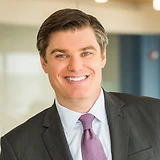At the end of last year, Congress passed, and President Biden signed, the new appropriations bill which contained the SECURE 2.0 Act. The legislation provides numerous changes that impact retirement plans and is an expansion of the earlier SECURE Act law. The previous SECURE Act changed the age at which retirees had to take required minimum distributions (“RMDs”) and allowed workplace saving plans to offer annuities.
This new SECURE 2.0 contains many new provisions, including changes, again, to RMDS, but also includes changes that had long been discussed but never occurred. One such change is the requirement that 401(k) and 403(b) plans feature automatic enrollment for employees of companies that sponsor such plans.
Beginning with plans years beginning starting after 12/31/2024, plan sponsors must provide for automatic enrollment into their plans starting at a contribution rate of at least 3% of earnings. In addition, plans must also include automatic escalators in the amount of contributions to the plans by participants. The escalator increases annually by 1% up to at least 10% but not more than 15% of the employee's pay. Employees can affirmatively elect a different contribution.
While this new requirement may scare plan sponsors, there are quite a few exceptions which effectively make the automatic enrollment feature only apply to new plans of larger entities. In other words, the vast majority of 401(k) and 403(b) plans will be exempt from this requirement. As written, SECURE 2.0 impacts only new plans that start after 1/1/2025. Further, the law exempts plans sponsored by small businesses with 10 or fewer employees, new businesses less than 3-years-old, churches, and governmental plans.
So, while automatic enrollment is finally coming to the retirement plan world, most plan sponsors need not worry. However, if you have trouble passing discrimination testing, an automatic enrollment feature may be a good idea in increase participation even if you are not required to offer it under SECURE 2.0.
Please stay tuned for updates as more guidance is issued regarding these new requirements. If you have any questions about this, or any portion of SECURE 2.0, please contact any of Graydon’s Employee Benefits team.



